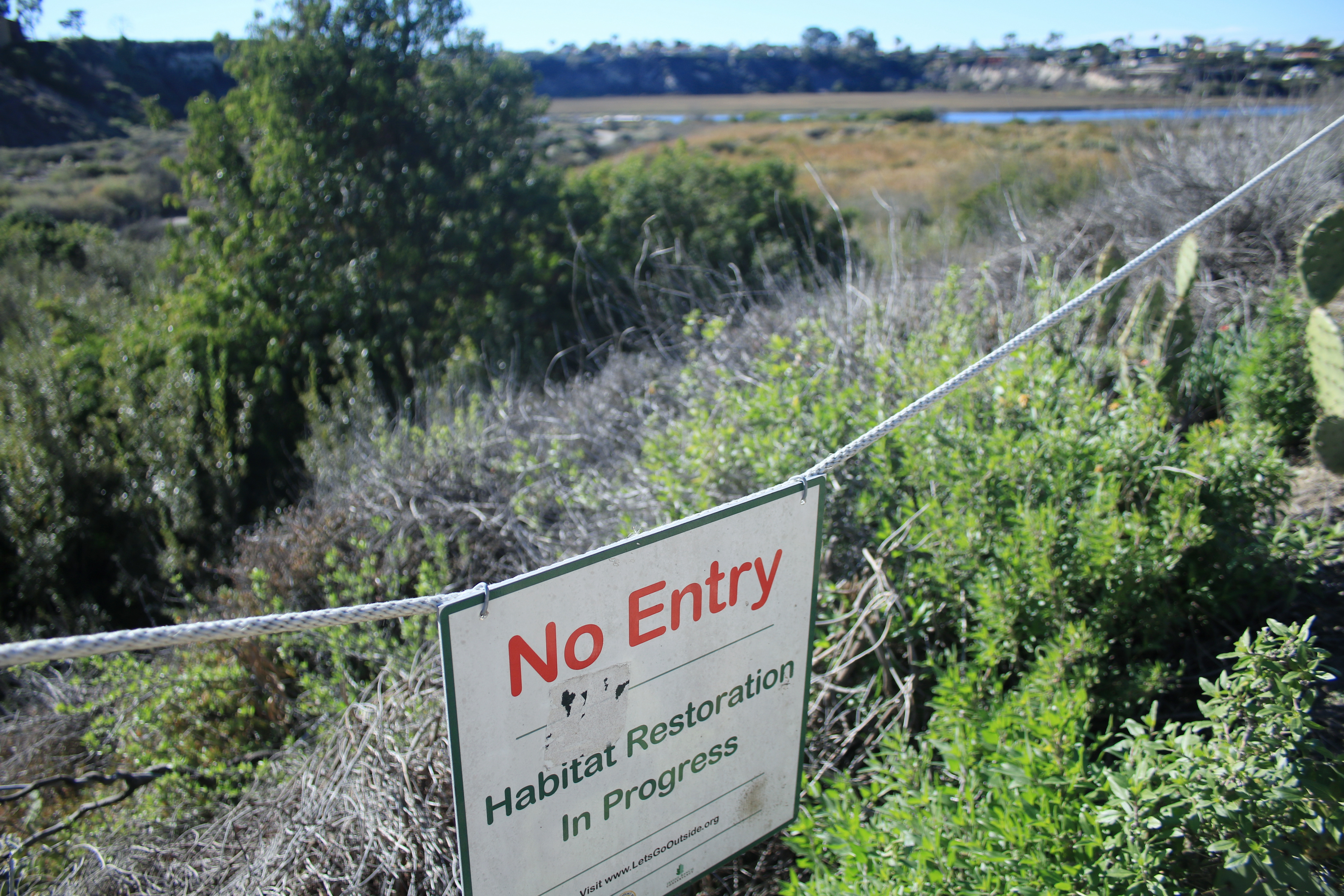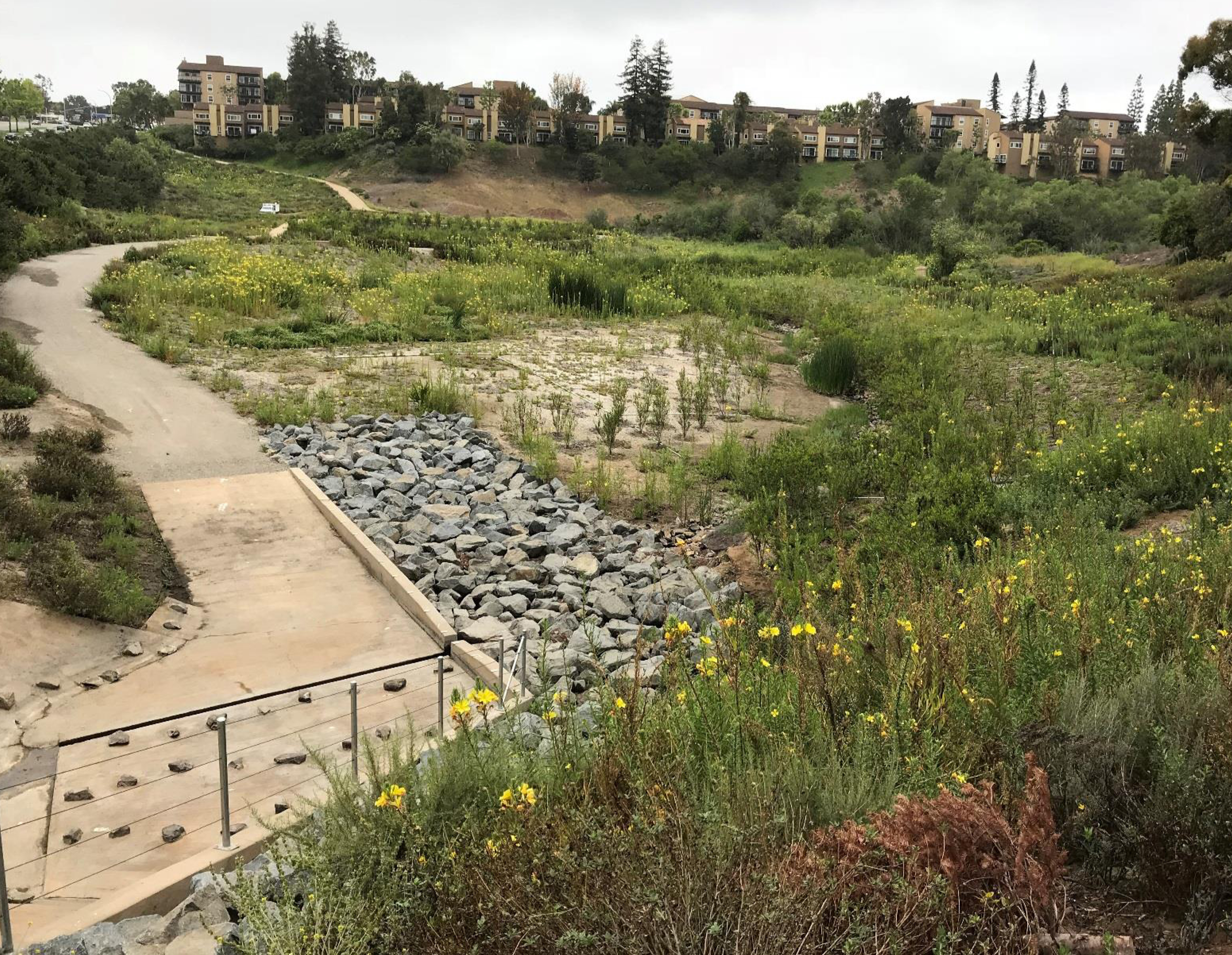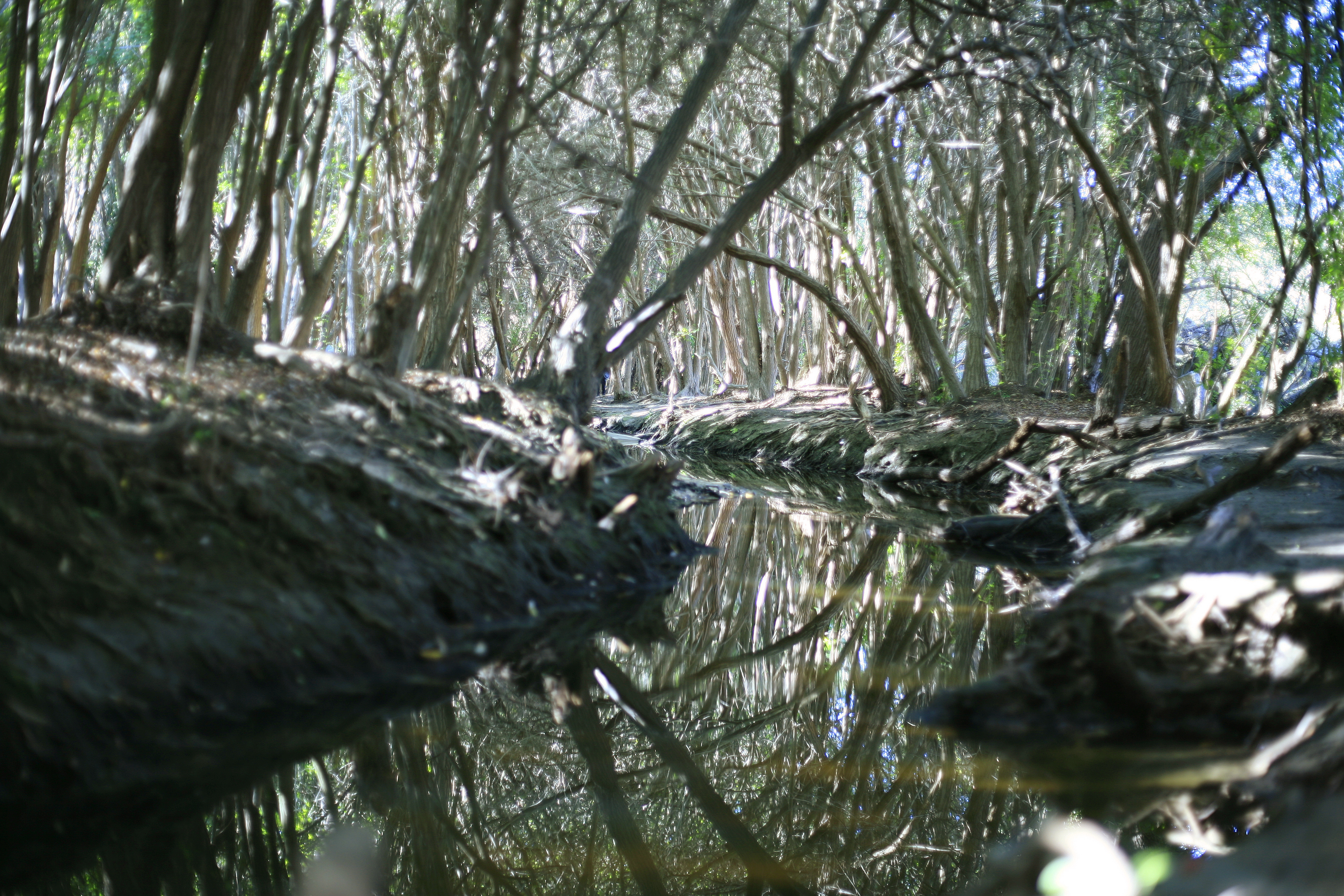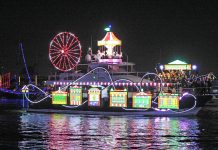
— Photo Illustration by Sara Hall ©
Plans to restore Big Canyon Nature Park, the stretch of forest off of Back Bay Drive (across from the gravel parking lot), to its more natural state got the go ahead from Newport Beach City Council this week.
Council voted 6-0 on Tuesday to approve the project design for Big Canyon Coastal Habitat Restoration and Adaptation Project Phase 2A, as well as the Mitigated Negative Declaration. Councilman Kevin Muldoon was absent.
The project will restore and improve nine acres in the center of the Big Canyon Nature Park, including: Creek improvements, replacement of invasive trees and vegetation with native trees and plants, measures to deal with a pervasive infestation of the Polyphagous shothole borer, and public access improvements and informational signage, explained Assistant City Engineer Robert Stein.
Everyone should take a step back and consider why this is important, Councilman Brad Avery commented.
“This area was degraded,” for quite some time, Avery said. “It served as spoiled land for dredging and then a lot of non-native species got rolling.”

— Photo by Sara Hall ©
It’s a worthwhile project, for the health of the environment and the public’s enjoyment, Avery said.
This is a place where the city can continue its effort to enhance public spaces and provide some “breathing room” for the environment and local flora and fauna, Avery said, as well as get rid of some “bad stuff.”
“All together, it’s an exceptional project,” Avery said. “I’m a total fan… I think it’s going to look incredible in another couple of years.”
Mayor Diane Dixon noted that the area is somewhat hidden, as people drive by on Jamboree, and this project will hopefully increase awareness about the park.
This is a shining example of what Newport Beach has been working on regarding ecological and environmental improvements in the area, Dixon said.
The first phase of the project was completed in summer 2017. It was primarily a water quality improvement project and has been successful with a reduction of selenium of about 67 percent, Stein noted. About six acres were also restored with California native vegetation.
Councilman Marshall “Duffy” Duffield asked about selenium showing up elsewhere in the bay and how to prevent it in the future.
Selenium appeared because of the “over irrigation activities” in the upper watershed, Stein explained. Selenium occurs in the natural sediment-rich Monterey formation, the over irrigation “mobilizes” the selenium and washes it down into the creek. As the over-irrigation stops, so will the loading of selenium, Stein clarified.

— Photo courtesy the city of Newport Beach
“So we have control over it,” Stein said.
The second part of the project includes water quality improvement measures, restoring natural plant life, and removing invasive trees, plants, and animals in the area, including the Brazilian pepper trees, South African clawed frog, and the polyphagous shothole borer beetle, all of which are both voracious and resilient, Stein explained.
The borer beetle has become a large infestation in the canyon, he emphasized. It leaves a fungus that kills the willow trees.
“It’s a really obnoxious insect,” Stein said.
On top of water quality challenges and invasive species, there has been increased illegal nighttime activity in the park, Stein said. People will hide out under the canopy of the pepper trees and build campfires and makeshift shelters, which have to be cleaned up by city staff. Residents on both sides of the canyon have complained, he added.
The pepper trees have choked out most other vegetation, there is no understory (the shrubs and plants under the canopy) and no animals in the small forest.
“In the sunlight, it’s bearable, but on a gloomy day you just don’t want to be caught in that forest, it’s pretty depressing and gloomy,” Stein commented.

— Photo by Sara Hall ©
The project will remove the invasive Brazilian pepper trees and replant with native trees and shrubs, including willows, sycamores and cottonwoods. Approximately 150 to 200 Brazilian pepper trees will be removed. It is specifically listed as a “problem tree” in City Council Policy G-1.
The first phase of the project was funded by Measure M and the city, Stein said. The design portion the second phase of the project will be funded through a $640,000 grant from the Ocean Protection Council to the Newport Bay Conservancy.
Annual maintenance cost will be approximately $50,000 to $60,000. For the first five years, mitigation monitoring (as required by the Coastal permit) will cost about $20,000 to $25,000 each year.
The Conservancy also applied for a construction funding grant with the California Department of Water Resources for $1.2 million. If the grant is approved, construction on the project is anticipated to start in September and a substantial completion by June 2020.
This project will create a safe, usable space out of an uninviting, monoculture of pepper trees that don’t support native wildlife, said Randall English, president of the Newport Bay Conservancy. It will also be a key area for recreational and educational opportunities, he added.




